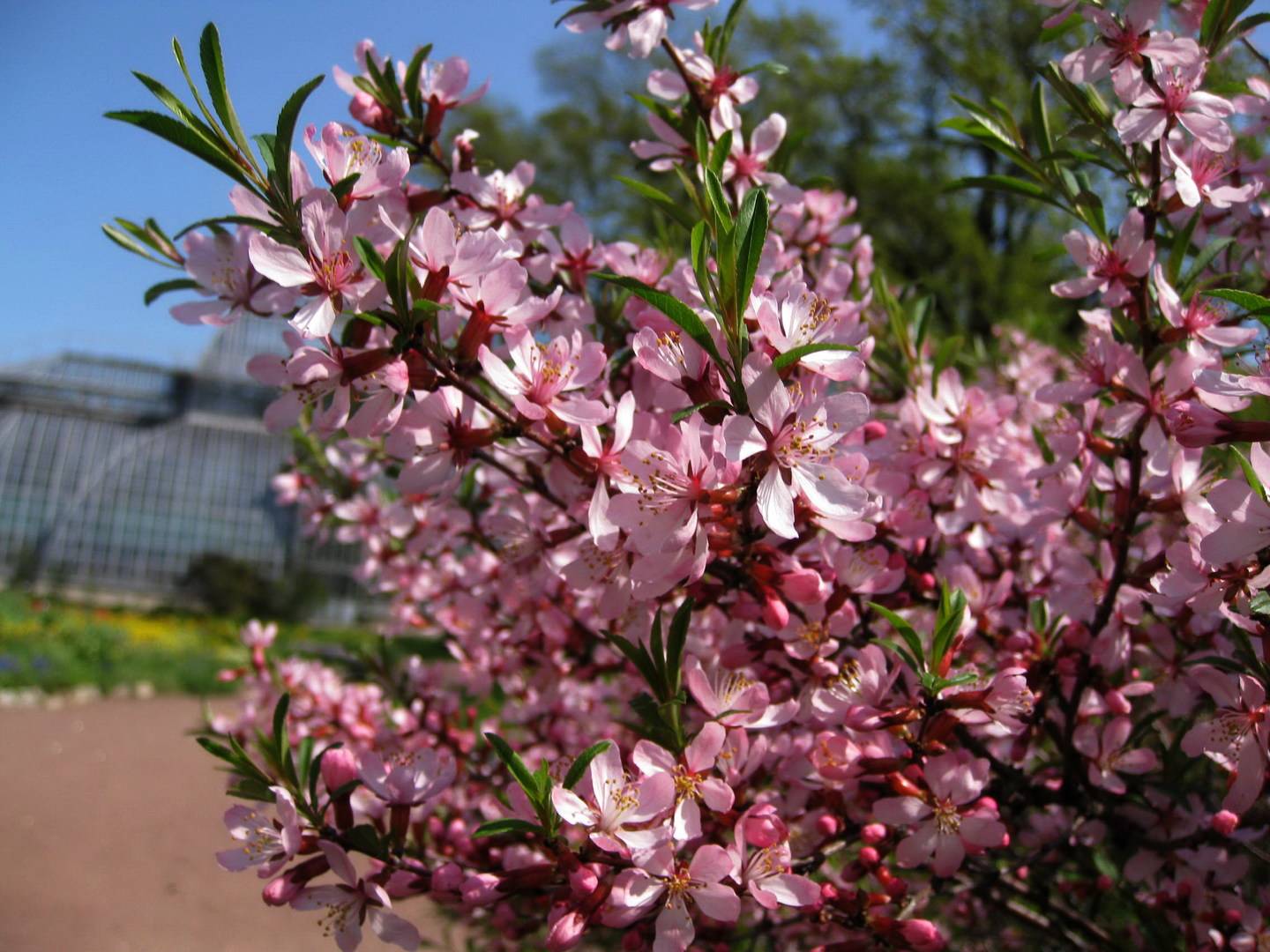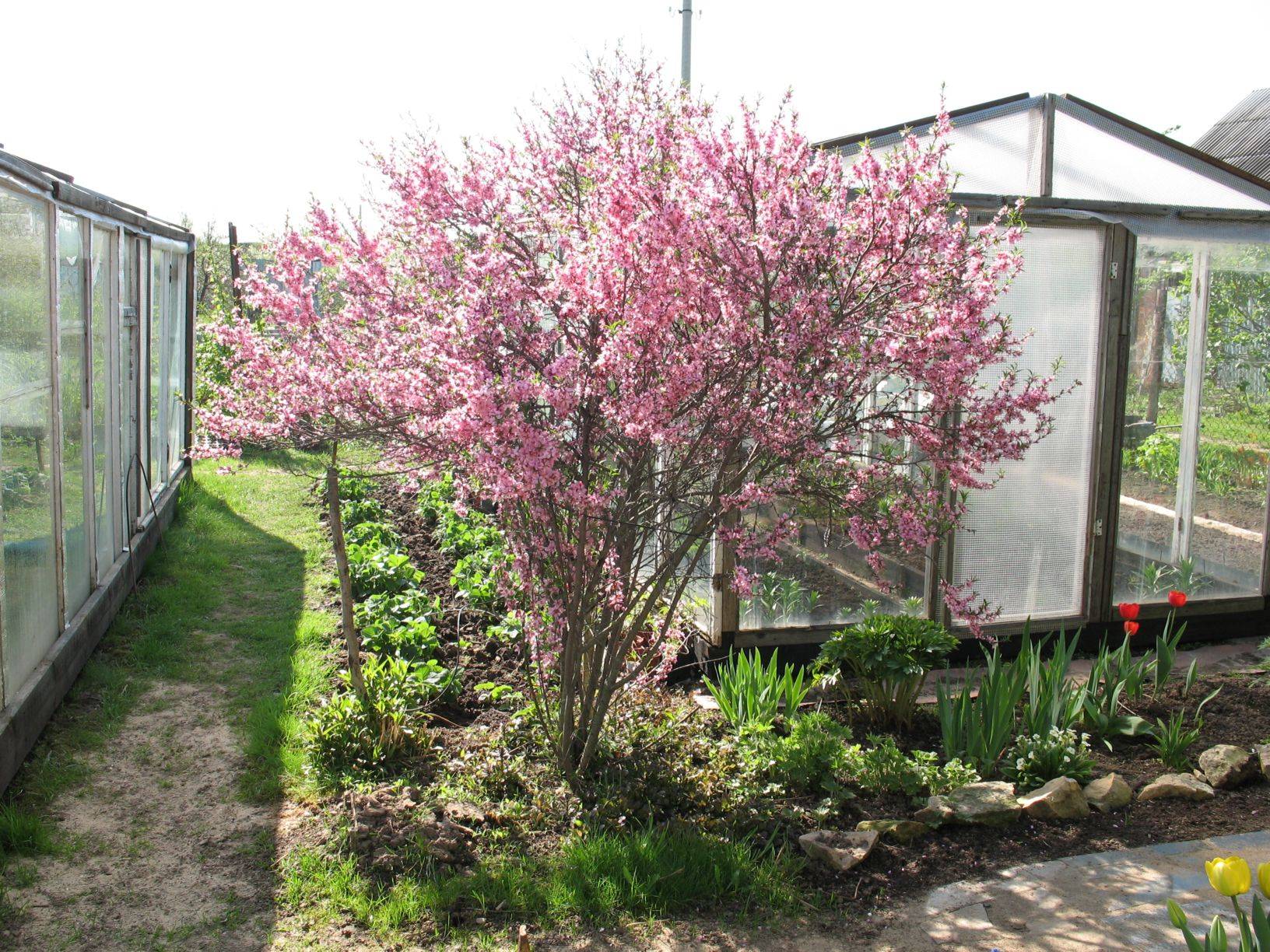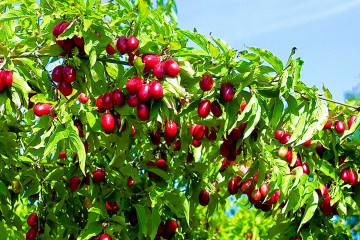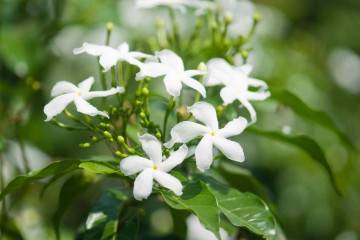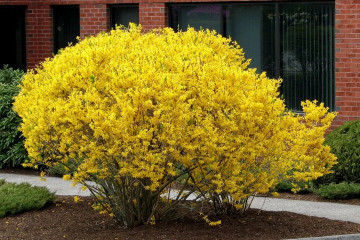Almond shrub - ornamental flowering plant
Content:
Recently, the almond shrub is gaining popularity among landscape designers. A small decorative tree is perfect for decorating summer cottages, spaces near high-rise buildings, as well as park areas in the city. From a distance it can be mistaken for a peach, but this is a mistake. The plant is quite unpretentious to care for, and therefore it can be grown by novice gardeners.
The origin and appearance of almonds
Almonds are an ornamental shrub belonging to the Pink family of the Plum genus. Its distinctive characteristics are:
- thermophilicity;
- longevity;
- exquisite aroma and pleasant taste in nuts;
- powerful root system.
The homeland of the bush is the Mediterranean and Central Asia. Some of the varieties have undergone the domestication procedure and are massively grown on plantations in the USA, California. There is bitter almonds as well as sweet ones.
Almond blossom description
The almond tree is a shrub with abundant flowering. It lasts two to three weeks. The branches of the plant are covered with a large number of large pink flowers. Most often they are either simple or terry. That is why the plant has an increased decorative effect. After flowering ends, a compact and spherical crown gives it a beautiful appearance.
Types and varieties
Many varieties of almonds and flowering shrubs have been bred. Depending on the variety, the plant can look like a small tree, reaching five meters in height, or a bush with a height of 2-3 m.
Nikitsky b2
The variety is distinguished by its early maturity. Already 2-3 years after planting, you can remove delicious nucleoli from it. The tree can grow up to 3.5 m in height. Its distinctive characteristics are:
- rough grayish brown bark;
- oily seed of a dark brown hue with white soft flesh inside;
- large oblong lanceolate leaves with carved edges;
- long leaf petioles.
Paper-shell
A sweet variety of almonds that are relatively hardy. It reaches a height of 4-5 m.Distinguishing features of an edible shrub are:
- flowering in the last days of March;
- white flowers with crimson edging;
- thin shell of nuts;
- fruits with a diameter of 4 cm
Seaside
Primorsky variety was developed in Crimea. Plant height ranges from 1.3 to 1.7 m. It begins to bear fruit 3-4 years after planting in open ground. The distinctive characteristics of the variety are:
- large fruits of an elongated shape, pointed at the end;
- light brown nuts;
- high frost resistance.
The variety was bred by crossing the saplings Nikitsky b2 and Princess 2077.
Sweet Dreams
This variety of pink almond shrub is compact. It reaches a height of no more than 1.5 m. Other distinctive features are:
- late flowering (in May);
- single bright pink flowers no more than 2 cm in diameter;
- erect branches;
- linear-lanceolate leaves, reaching a length of 6 cm.
The variety tolerates transplanting well, is frost-resistant.
Victoria
One of the most productive varieties of almonds. Bred on the territory of Moldova. Distinctive characteristics are:
- large oval-shaped fruits weighing 6 g;
- hard, smooth shell of brownish nucleoli.
Three-bladed
The shrub is frost-resistant. With proper care, it easily tolerates frosts down to -20-25 ° C. It can reach a height of 5 m.
The size of the flowers is 2-3 cm in diameter.
Coastal
One of the best varieties of shrubs, characterized by frost resistance and early maturity. Suitable for breeding in the Moscow region. The tree is of medium height. Flowering begins in mid-April, fruits appear in mid-September. The nucleoli are edible, tasty, and can reach 3 g in weight.
White sail
An ornamental shrub reaching three meters in height. Differs in frost resistance, normally tolerates drought, blooms in early May.
Anyuta
The variety is stunted. Its maximum height is 1.5 m. Flowering begins in April. The variety is resistant to drought and frost. Fruit picking begins in late summer and continues until mid-autumn.
The described variety of ornamental almond shrub does not require much effort in planting and care.
Dream
Low grade, reaches no more than 1.5 m in height. Flowers and leaves bloom almost simultaneously. The bush is often used by landscape designers to decorate gardens. Distinctive characteristics are:
- large pink flowers in a rich tone;
- long narrow leaves of a gray-green hue;
- slightly drooping fruits.
Transplanting almonds outdoors after purchase
In order for the almond shrub to bloom beautifully and quickly begin to bear fruit, it is important to take care of the correct transplantation of the plant into the open ground after purchase.
What is needed for landing
The most important thing if you want to grow almonds on the site is to buy healthy seedlings. It is worth paying attention to:
- the root system of the seedling did not have dry or rotten elements;
- the branches were firm, without strange spots and outgrowths;
- the leaves, if present on the seedling, were intact, without traces of fungal or bacterial infection.
Choosing the best place
When choosing where to plant an almond, tree or shrub, it is important to consider the following factors:
- illumination. The sun should hit the plant almost constantly;
- wind. Almonds do not like windy areas, and therefore it is better to plant them near buildings, a fence;
- the soil. The soil should be sandy, rocky with good drainage;
- humidity. Almonds do not like waterlogged air and soil.
If all these conditions are met, it will be quite simple to care for the shrub.
Step-by-step planting process
The almond plant is a shrub, in the description of the planting process of which there are several stages:
- Removal of weeds, roots, stones from the planting site.
- Digging holes of medium depth, up to 0.3 m.
- Placing a layer of rubble or broken brick at the bottom of the pit, then a layer of sand, the thickness of which will be from 3 to 5 cm.
- Anchoring the support for the young shrub in the center of the pit. Its height must be at least 0.5 m.
- Placing the seedling briefly in the mud mash solution. After that, they put him in a dug hole.
- Top-up fertile soil. It can be obtained by mixing in equal proportions sand, humus, leaves and garden soil.
- Tamping the substrate around the seedling, watering it. This will require at least 10 liters of water for one shrub.
- Tying the plant with twine.
- Loosening and mulching the substrate around the seedling.
Reproduction of almonds
There are several methods of propagation of almond shrubs. The most common are cuttings and growing from seeds.
Propagation by cuttings
When propagating a culture by cuttings, it is recommended to use young shoots on which the branches are not covered with bark. The process is as follows:
- Cutting cuttings.
- Sprinkle charcoal on the cut points.
- Soaking cuttings in root solution.
- Rooting in a deep wooden box filled with loose and nutritious soil.
Cuttings should be cut in the middle of summer.
Growing from seeds
Most often, sowing seeds is done in spring or autumn. Before that, it is important to prepare the seeds, which means they must be kept in the refrigerator on a vegetable shelf for four months.
Next, a deep wooden box is selected, which is filled with suitable soil. Grooves are made in it with a depth of 8 to 10 cm.They should be at a distance of 50 cm from each other.
When germinating seeds, it is important to weed, water and loosen them. By mid-summer, seedlings usually reach 0.5 m in height. At this moment, the branches of the plant are pruned at a height of up to 10 cm from the root collar. Then the plants are planted in open ground.
Almond bush care
In the description of the plant producing edible fruits, it is indicated that it is unpretentious in care. The varieties that were bred quite recently are completely distinguished by drought and frost resistance.
Watering mode
The amount of water used for irrigation depends on the quality of the substrate: if it is light, then more liquid is needed, if loamy - less. On average, one bush needs 8-10 liters.
Water the plants when the soil above the root system dries out 2 cm deep. After it dries a little, a loosening procedure is performed to improve aeration.
Top dressing
Ornamental almonds need additional nutrients. It is recommended to feed the plant with mineral fertilizers. At the time of the growing season, ammonium nitrate or urea is used, dissolving in water. During the flowering period, you need to use mineral mixtures with phosphorus and potassium. Before feeding the plant, the soil in the root system should be moistened.
Features of care during flowering
At the time of flowering, it is extremely important to prevent the root system from drying out. Otherwise, the flower buds will begin to fade and crumble. Top dressing at this moment is made with potassium-phosphorus fertilizers. If weeds are present, it is important to remove them in a timely manner.
Features of care during the rest period
The dormant period for ornamental shrubs begins in mid-September. At this point, it is important to prepare him for wintering. The tree must be covered with straw or dry foliage. This applies to young seedlings surviving the first winter outdoors. Adult plants do not take shelter.
With proper care, any of the described plant varieties will take root on the territory of Russia. It is important to take care of watering it in time, remove weeds, protect it from pests and spray it with nutrient mixtures that protect it from various diseases.A careful attitude to ornamental culture will allow you to enjoy beautiful flowering shrubs for many years.
